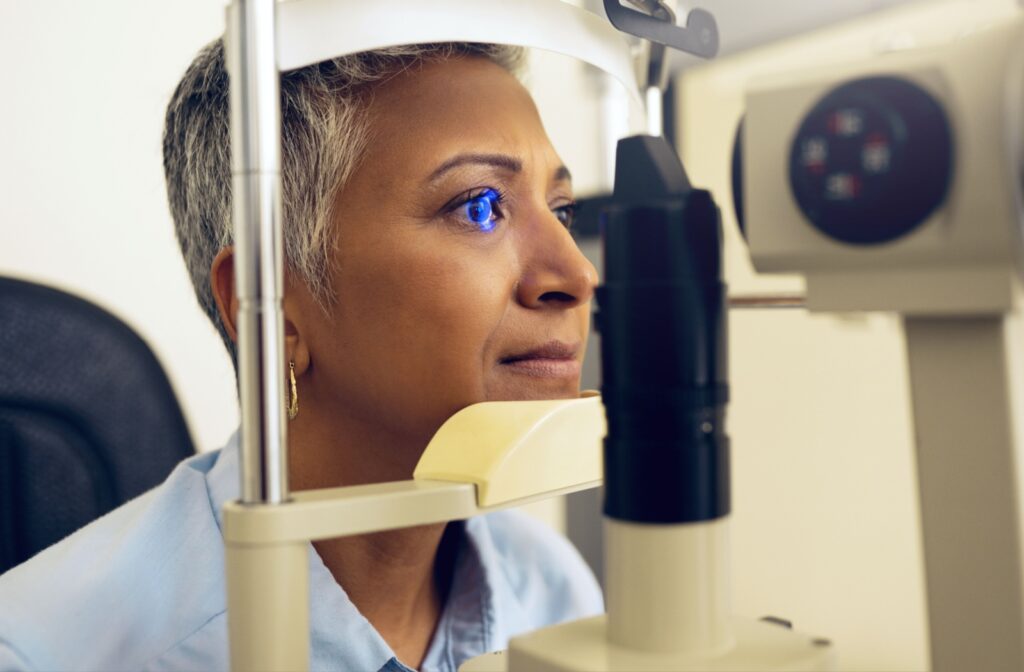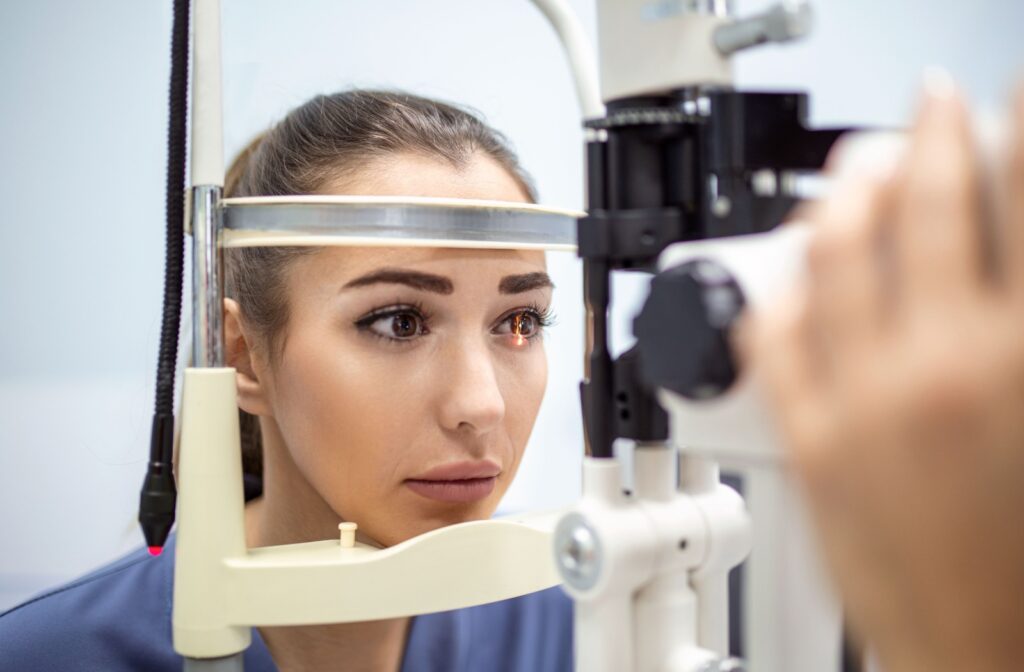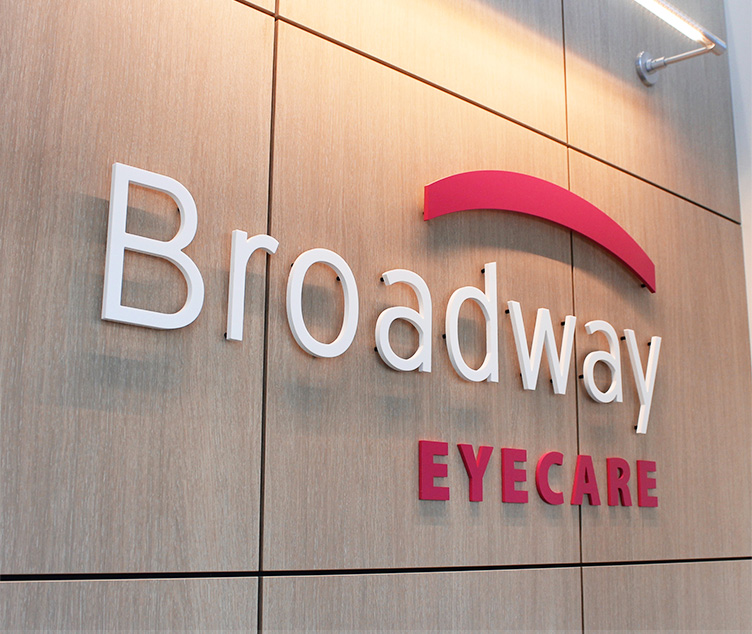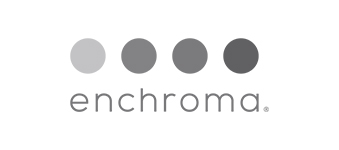Diabetes is a condition that doesn’t just impact blood sugar levels—it can also affect your overall health, including your vision. One of the most effective ways to monitor and protect your eye health if you have diabetes is through a specialized diabetic eye exam.
This examination is designed to identify diabetes-related eye conditions, like diabetic retinopathy, early enough to prevent or delay serious complications. Understanding what happens during a diabetic eye exam and why it’s essential is key to taking charge of your eye health.
What Happens During a Diabetic Eye Exam?
If you’ve never had a diabetic eye exam, you might wonder what’s involved. Here’s a step-by-step look at what typically happens:
- Medical history review: Your eye doctor will start by discussing your medical history. This includes asking questions about how well your diabetes is managed, any vision changes you’ve noticed, and any other health conditions that might affect your eyes. This information helps your optometrist understand your unique situation and tailor the exam to your needs.
- Visual acuity test: This test measures how clearly you can see. Using a standard eye chart, you’ll read letters from a distance to assess your vision at different ranges. This helps determine if you need glasses or an updated prescription.
- Wide-field retinal imaging: Instead of the traditional pupil dilation, your eye doctor will use wide-field retinal imaging to get a comprehensive view of your retina. This advanced imaging technology allows for detailed, high-resolution images of the retina without needing to dilate your pupils. It provides a wider view of both the central and peripheral areas of the retina, helping your optometrist detect any early signs of diabetic retinopathy, swelling, or abnormal blood vessels.
- Retinal examination: Your optometrist will examine the retina—the light-sensitive tissue at the back of your eye—using a magnifying tool to check for signs of diabetic retinopathy, such as abnormal blood vessels, swelling, or bleeding. This step is critical for detecting changes that aren’t yet causing symptoms but could lead to vision problems if untreated.
- Tonometry: This test measures the pressure inside your eye to detect glaucoma, a condition that can develop more frequently in people with diabetes. Elevated eye pressure is often a sign that warrants closer monitoring.

Why Are Diabetic Eye Exams Important?
Diabetic eye exams are crucial for two main reasons: early detection and prevention. Diabetes can cause damage to the blood vessels in your retina, leading to conditions like diabetic retinopathy. If left untreated, diabetic retinopathy can progress to more severe stages, causing vision loss or even blindness.
The good news is that regular eye exams can catch these changes early, often before you notice any symptoms. Research shows that early detection and treatment can reduce the risk of blindness due to diabetic retinopathy by up to 95%.
For people with type 1 diabetes, it’s recommended to schedule your first eye exam within 5 years of diagnosis. If you have type 2 diabetes, it’s best to get an eye exam as soon as possible after your diagnosis. After that, an annual exam is usually recommended, though your optometrist might suggest more frequent check-ups if needed.
Managing Eye Health with Diabetes
Here are some strategies to protect your vision:
- Control blood sugar levels: High blood sugar can damage the blood vessels in your retina, so keeping your levels within your target range is essential for eye health. Work closely with your healthcare team to maintain good control.
- Monitor blood pressure and cholesterol: High blood pressure and cholesterol can increase your risk of diabetic retinopathy. Regularly checking and managing these levels will benefit your eyes and your overall health.
- Adopt a healthy lifestyle: Eating a balanced diet, staying physically active, and avoiding smoking can significantly reduce the risk of diabetes-related eye problems.
- Schedule regular eye exams: Even if you feel your vision is fine, yearly diabetic eye exams are a non-negotiable part of managing your diabetes. Many eye conditions don’t present symptoms in their early stages, so regular check-ups are your best defense.
Diabetic Retinopathy
One of the most common diabetes-related eye conditions is diabetic retinopathy. This occurs when high blood sugar levels damage the small blood vessels in the retina. The condition can range from mild (non-proliferative retinopathy) to severe (proliferative retinopathy), where abnormal blood vessels grow on the retina, increasing the risk of bleeding and vision loss.
Signs of diabetic retinopathy can include blurred vision, dark spots, or floaters. However, these symptoms usually appear in the later stages, making regular exams critical for early detection and treatment.
Protecting Your Vision Together
Your eyes are worth protecting, and regular diabetic eye exams are an invaluable tool in preserving your vision. At Broadway Eyecare, we’re here to make the process as simple and comfortable as possible.Whether you’ve just been diagnosed with diabetes or are managing it long-term, we encourage you to prioritize your eye health. Schedule your diabetic eye exam today, and take the next step in safeguarding your vision for the future.









